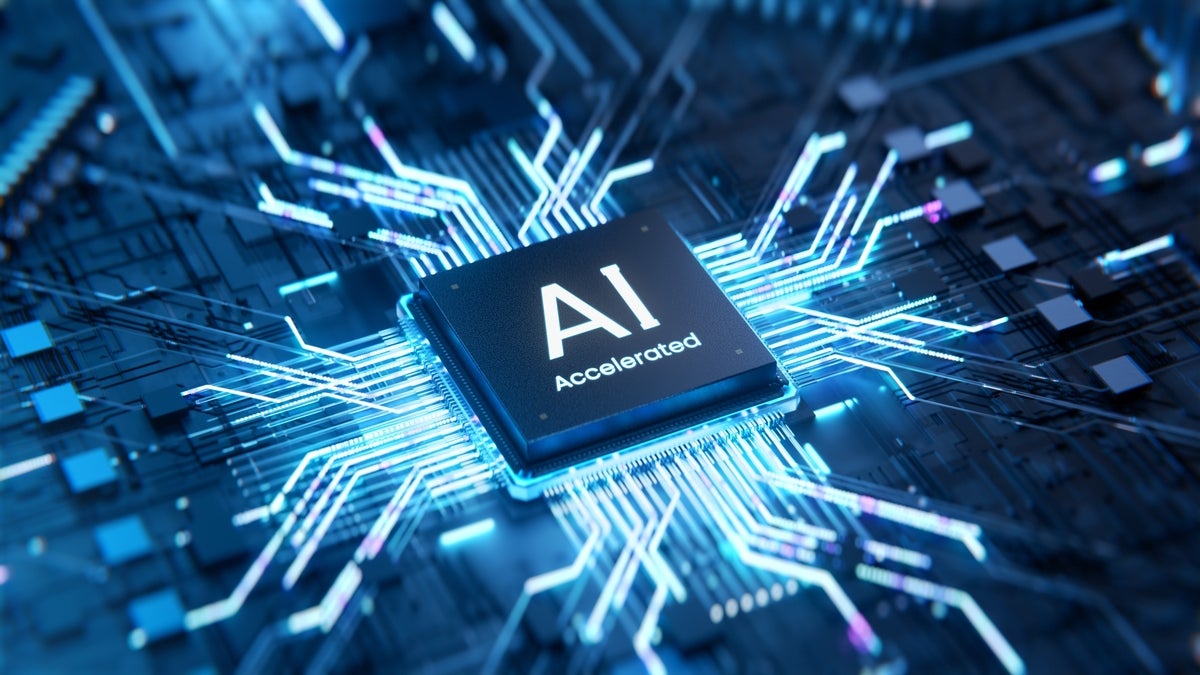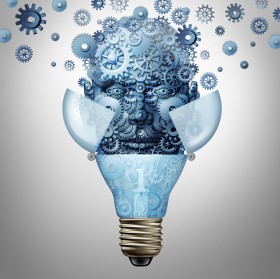What is artificial general intelligence really about?

AGI is a hypothetical intelligent agent that can accomplish the same
intellectual achievements humans can. It could reason, strategize, plan, use
judgment and common sense, and respond to and detect hazards or dangers. This
type of artificial intelligence is much more capable than the AI that powers the
cameras in our smartphones, drives autonomous vehicles, or completes the complex
tasks we see performed by ChatGPT. ... AGI could change our world, advance our
society, and solve many of the complex problems humanity faces, to which a
solution is far beyond humans' reach. It could even identify problems humans
don't even know exist. "If implemented with a view to our greatest challenges,
[AGI] can bring pivotal advances in healthcare, improvements to how we address
climate change, and developments in education," says Chris Lloyd-Jones, head of
open innovation at Avande. ... AGI carries considerable risks, and experts have
warned that advancements in AI could cause significant disruptions to humankind.
But expert opinions vary on quantifying the risks AGI could pose to society.
How to avoid the 4 main pitfalls of cloud identity management
DevOps and Security teams are often at odds with each other. DevOps wants to
ship applications and software as fast and efficiently as possible, while
Security’s goal is to slow the process down and make sure bad actors don’t get
in. At the end of the day, both sides are right – fast development is useless if
it creates misconfigurations or vulnerabilities and security is ineffective if
it’s shoved toward the end of the process. Historically, deploying and managing
IT infrastructure was a manual process. This setup could take hours or days to
configure, and required coordination across multiple teams. (And time is money!)
Infrastructure as code (IaC) changes all of that and enables developers to
simply write code to deploy the necessary infrastructure. This is music to
DevOps ears, but creates additional challenges for security teams. IaC puts
infrastructure in the hands of developers, which is great for speed but
introduces some potential risks. To remedy this, organizations need to be able
to find and fix misconfigurations in IaC to automate testing and policy
management.
Why a DevOps approach is crucial to securing containers and Kubernetes

DevOps, which is heavily focused on automation, has significantly accelerated
development and delivery processes, making the production cycle lightning fast,
leaving traditional security methods lagging behind, Carpenter says. “From a
security perspective, the only way we get ahead of that is if we become part of
that process,” he says. “Instead of checking everything at the point it’s
deployed or after deployment, applying our policies, looking for problems, we
embed that into the delivery pipeline and start checking security policy in an
automated fashion at the time somebody writes source code, or the time they
build a container image or ship that container image, in the same way developers
today are very used to, in their pipelines.” It’s “shift left security,” or
taking security policies and automating them in the pipeline to unearth problems
before they get to production. It has the advantage of speeding up security
testing and enables security teams to keep up with the efficient DevOps teams.
“The more things we can fix early, the less we have to worry about in production
and the more we can find new, emerging issues, more important issues, and we can
deal with higher order problems inside the security team,” he says.
Understanding Europe's Cyber Resilience Act and What It Means for You
The act is broader than a typical IoT security standard because it also applies
to software that is not embedded. That is to say, it applies to the software you
might use on your desktop to interact with your IoT device, rather than just
applying to the software on the device itself. Since non-embedded software is
where many vulnerabilities take place, this is an important change. A second
important change is the requirement for five years of security updates and
vulnerability reporting. Few consumers who buy an IoT device expect regular
software updates and security patches for that type of time range, but both will
be a requirement under the CRA. The third important point of the standard is the
requirement for some sort of reporting and alerting system for vulnerabilities
so that consumers can report vulnerabilities, see the status of security and
software updates for devices, and be warned of any risks. The CRA also requires
that manufacturers notify the European Union Agency for Cybersecurity (ENISA) of
a vulnerability within 24 hours of discovery.
Conveying The AI Revolution To The Board: The Role Of The CIO In The Era Of Generative AI

Narratives can be powerful, especially when they’re rooted in reality. By
curating a list of businesses that have thrived with or invested in
AI—especially those within your sector—and bringing forth their successful
integration case studies, you can demonstrate not just possibilities but proven
success. It conveys a simple message: If they can, so can we. ... Change,
especially one as foundational as AI, can be daunting. Set up a task force to
outline the stages of AI implementation, starting with pilot projects. A clear,
step-by-step road map demystifies the journey from our current state to an
AI-integrated future. It offers a sense of direction by detailing resource
allocations, potential milestones and timelines—transforming the AI proposition
from a vague idea into a concrete plan. ... In our zeal to champion AI, we
mustn’t overlook the ethical considerations it brings. Draft an AI ethics
charter, highlighting principles and practices to ensure responsible AI
adoption. Addressing issues like data privacy, bias mitigation and the need for
transparent algorithms proactively showcases a balanced, responsible
approach.
Chip industry strains to meet AI-fueled demands — will smaller LLMs help?

Avivah Litan, a distinguished vice president analyst at research firm Gartner,
said sooner or later the scaling of GPU chips will fail to keep up with growth
in AI model sizes. “So, continuing to make models bigger and bigger is not a
viable option,” she said. iDEAL Semiconductor's Burns agreed, saying, "There
will be a need to develop more efficient LLMs and AI solutions, but additional
GPU production is an unavoidable part of this equation." "We must also focus on
energy needs," he said. "There is a need to keep up in terms of both hardware
and data center energy demand. Training an LLM can represent a significant
carbon footprint. So we need to see improvements in GPU production, but also in
the memory and power semiconductors that must be used to design the AI server
that utilizes the GPU." Earlier this month, the world’s largest chipmaker, TSMC,
admitted it's facing manufacturing constraints and limited availability of GPUs
for AI and HPC applications.
NoSQL Data Modeling Mistakes that Ruin Performance

Getting your data modeling wrong is one of the easiest ways to ruin your
performance. And it’s especially easy to screw this up when you’re working with
NoSQL, which (ironically) tends to be used for the most performance-sensitive
workloads. NoSQL data modeling might initially appear quite simple: just model
your data to suit your application’s access patterns. But in practice, that’s
much easier said than done. Fixing data modeling is no fun, but it’s often a
necessary evil. If your data modeling is fundamentally inefficient, your
performance will suffer once you scale to some tipping point that varies based
on your specific workload and deployment. Even if you adopt the fastest database
on the most powerful infrastructure, you won’t be able to tap its full potential
unless you get your data modeling right. ... How do you address large partitions
via data modeling? Basically, it’s time to rethink your primary key. The primary
key determines how your data will be distributed across the cluster, which
improves performance as well as resource utilization.
AI and customer care: balancing automation and agent performance

AI alone brings real challenges to delivering outstanding customer service and
satisfaction. For starters, this technology must be perfect, or it can lead to
misunderstandings and errors that frustrate customers. It also lacks the
humanised context of empathy and understanding of every customer’s individual
and unique needs. A concern we see repeatedly is whether AI will eventually
replace human engagement in customer service. Despite the recent advancements in
AI technology, I think we can agree it remains increasingly unlikely. Complex
issues that arise daily with customers still require human assistance. While
AI’s strength lies in dealing with low-touch tasks and making agents more
effective and productive, at this point, more nuanced issues still demand the
human touch. However, the expectation from AI shouldn’t be to replace humans.
Instead, the focus should be on how AI can streamline access to live-agent
support and enhance the end-to-end customer care process.
How to Handle the 3 Most Time-Consuming Data Management Activities

In the context of data replication or migration, data integrity can be
compromised, resulting in inconsistencies or discrepancies between the source
and target systems. This issue is identified as the second most common challenge
faced by data producers, identified by 40% of organizations, according to The
State of DataOps report. Replication processes generate redundant copies of
data, while migration efforts may inadvertently leave extraneous data in the
source system. Consequently, this situation can lead to uncertainty regarding
which data version to rely upon and can result in wasteful consumption of
storage resources. ... Another factor affecting data availability is the use of
multiple cloud service providers and software vendors. Each offers proprietary
tools and services for data storage and processing. Organizations that heavily
invest in one platform may find it challenging to switch to an alternative due
to compatibility issues. Transitioning away from an ecosystem can incur
substantial costs and effort for data migration, application reconfiguration,
and staff retraining.
The Secret of Protecting Society Against AI: More AI?

One of the areas of greatest concern with generative AI tools is the ease with
which deepfakes -- images or recordings that have been convincingly altered and
manipulated to misrepresent someone -- can be generated. Whether it is highly
personalized emails or texts, audio generated to match the style, pitch,
cadence, and appearance of actual employees, or even video crafted to appear
indistinguishable from the real thing, phishing is taking on a new face. To
combat this, tools, technologies, and processes must evolve to create
verifications and validations to ensure that the parties on both ends of a
conversation are trusted and validated. One of the methods of creating content
with AI is using generative adversarial networks (GAN). With this methodology,
two processes -- one called the generator and the other called the discriminator
-- work together to generate output that is almost indistinguishable from the
real thing. During training and generation, the tools go back and forth between
the generator creating output and the discriminator trying to guess whether it
is real or synthetic.
Quote for the day:
''You are the only one who can use
your ability. It is an awesome responsibility.'' -- Zig Ziglar
No comments:
Post a Comment